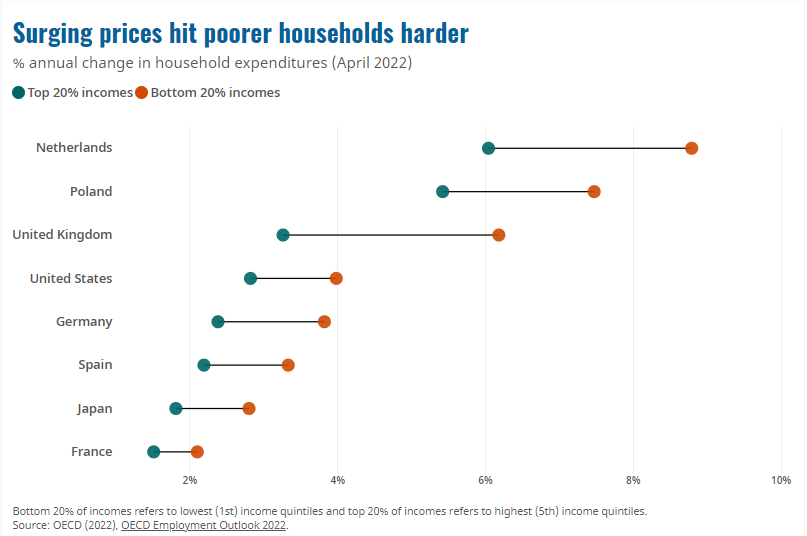There was a time when working at Google or Amazon was the dream of many. These names resounded assurance and job security.
However, those days are long gone. Today, on one hand, Amazon and Foxconn are some of the largest employers in the world; these are also among the list of companies which have fired the most number of employees.
In the past year, Amazon has fired more than 30,000 of its employees. Foxconn, which supplies electronic parts to Apple and Samsung, reportedly laid-off 60,000 employees after applying advance robotic technologies in Taiwan.
The same is true for other tech firms, such as Meta and Google, which let go over 10,000 of their employees.
The Causes of Rapid Job Loss:
Economic uncertainty:
Although companies laid off employees every now and then depending upon their internal financial conditions. But during pandemic the companies were struggling for cash and resorted to laying off employees as the best method to cut costs instantly.
Post the pandemic, as the businesses picked up pace, companies over-estimated their growth projections based on positive future outlook. Companies stashed employees in advance, training them for the upcoming future demands. But, a year later, the tables turned as the Russian commenced war in Ukraine. Major economies such as America and UK struggled amid economic crunch. The prices of the commodities surged and the oil prices skyrocketed. The cost of living crisis took a toll on all big and small businesses alike.

As a result, over 1000 companies wrapped up their operations in Russia and other small businesses in all over Europe suffered from reduced sales resulting from inflation.
Tech companies were no different. As the global economy jolted, major tech companies such as Amazon, Meta, and Google began laying-off employees all around the world.
Automation and The Rise of AI:
With the rise and widespread adoption of Artificial intelligence and robotics, the tech segment has become highly volatile job market. Automation, particularly through the use of artificial intelligence and robotics, has the potential to replace certain routine and repetitive tasks, which were traditionally performed by us humans.
Labor extensive jobs, such as warehousing jobs in material loading and unloading and packaging jobs are rapidly taken up by machines and robots. This is because the robotic machines are fast, accurate and more efficient than humans. On the flip side, automation also has the potential to create new jobs. As technology advances, there is an increasing demand for skilled professionals in areas such as machine learning, artificial intelligence, data science, and cybersecurity.
So, it is safe to say that the jobs in tech sector are evolving and not vanishing.
Evolving Tech Landscape:
The tech landscape is evolving. Research suggests that the tech market is expecting a job change. Going by the World Economic Forum’s Future of Jobs Report 2023, experts are expecting a job change of 23% in the tech domain. 10% will be contributed by job reduction and 12% by the job growth. As a result, the job requirements are also evolving with more than 40% of current employee skills becoming redundant by 2027. This trend is already in motion and can be understood though simple example. In IT industry, Java Script and Java were the most popular skills in 2022, with more than 40% of global employers demanding these skills. On the other hand, PHP, which was once the most demanded IT skill, was demanded by only 5% of employers.
Additionally, the most demanding skills in the near future will be cognitive problem solving, analytical thinking, and general understanding of the technology.
The report further highlights that practical and technical skills will overpower the educational qualifications.
Has Tech Sector Lost its Charm?
As large corporations like Amazon undergo restructuring and workforce adjustments, the paradoxical reality emerges - amid the layoffs; there is a surging demand for highly skilled and future-ready professionals to drive innovation.
The tech sector has matured significantly over the years. Some argue that the initial excitement and rapid innovation seen in the early days of the internet and the dot-com boom have given way to a more stable and established industry now.
The claim is true for the most part. Well-established segments in tech industry, such as smartphone industry are over saturated and highly competitive now, leaving little to no room for new innovations. But new fields, such as, artificial intelligence, big data, cloud computing, and cybersecurity jobs are also on a rise.
Data scientists, data analysts, and cyber security jobs also rose by 5% past year.
Conclusion:
While job cuts are unfortunate, it is also important to understand that the tech landscape is ever evolving. With the intervention of Artificial intelligence and automation, it is becoming imperative to get accustomed to demanding skills.
Copyright © 2025 getessayservice.com

.png)